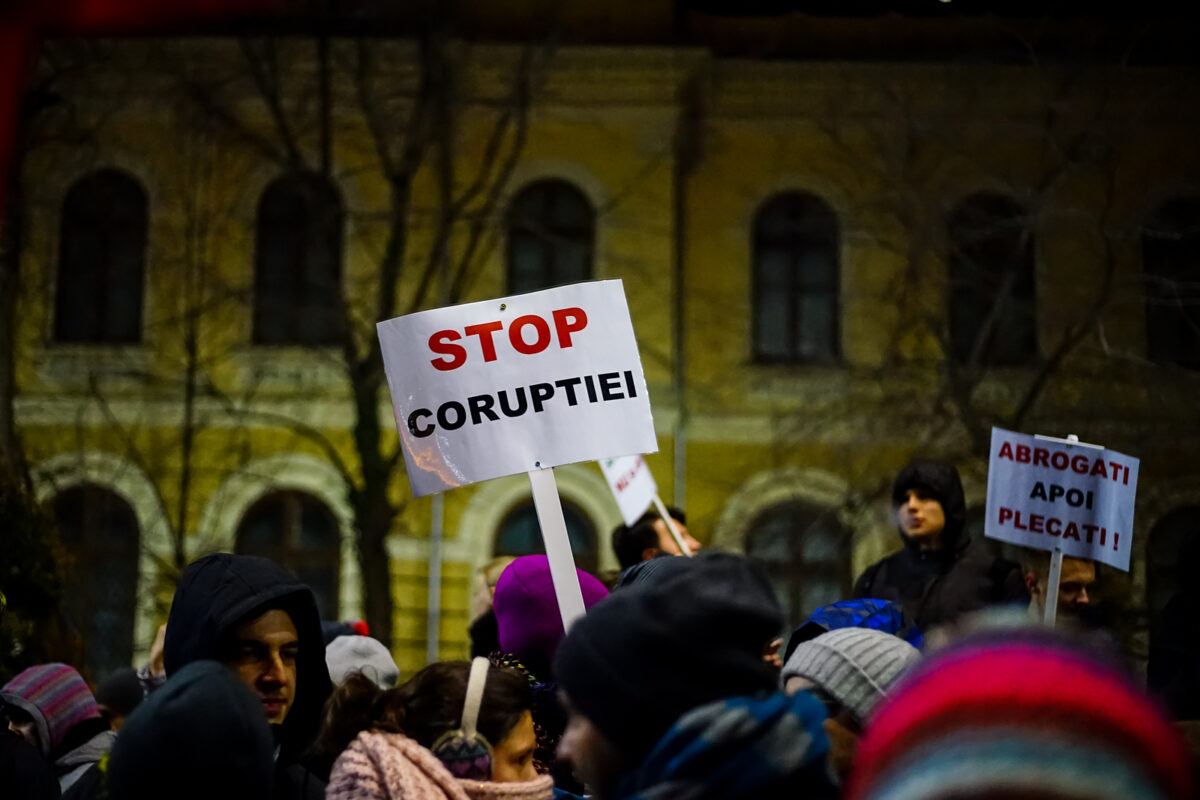The recent crisis in Romania has come as a direct consequence of a decision by the country’s Constitutional Court of Romania to invalidate and annul the presidential electoral process (after the first round of voting on November 24 and just days before the scheduled second round on December 8).
The decision was taken after it was revealed that there had been ‘foreign’ interference (of statal and non-statal actors) in the electoral process, and that there had been breaches of electoral law by the independent candidate Călin Georgescu (who won he first round and looked set to win the second), who reported zero campaign spending despite running a visibly highly expensive campaign, mainly on social media.
However, the Constitutional Court ruling, which by law is final, hence impossible to appeal at a higher court, divided Romanian society, and polarised it even deeper.
The decision came on December 6, just two days before the second round, and while the voting process already begun in the diaspora, puzzling people lined up to express their vote for their chosen candidate.
A changing diaspora
The voters of Georgescu, surprisingly many from the Romanian diaspora established in several EU member states and in the US and Canada, have a certain nostalgia towards everything Romanian, something that he exploited through his main electoral narratives.
Not long ago, in 2019, the diaspora was mainly EU-orientated, with a modern perspective, voting with the new anti-system party formed by young and dynamic people, the Union Save Romania (USR).
In between only one electoral cycle, things changed dramatically, with the emergence of Alliance for the Union of Romanians (AUR), promoting a strong sovereigntist approach, and an anti-globalist narrative, which saw its leaders often labelled as puppets of Moscow.
In fact, one of its prominent leaders, Diana Iovanovici Șoșoacă exited AUR and formed a new sovereignist party, SOS (S.O.S. Romania), considered a far-right party, with a strong Russian influence, Madame Sosoaca openly visiting the Russian embassy in Bucharest and participating in neo-Nazi meetings in Romania, which led to her exclusion from the presidential competition.
However, her party managed to enter the new parliament (Romania held a parliamentary election on December 1), which further complicates the fragile balance of power between pro- and anti-Europeans.
Immediate priorities
Coming back to the impact of the CCR ruling in Romania, several points need to be emphasised to understand the main positions taken since the annulment of the elections.
Today, new parliament in place, Romania needs to form a new government and to establish a new electoral calendar for the presidential election, as the current government—now officially operating in a caretaker capacity—does not have the political legitimacy to do so. A
Also, while the term of the current president, Klaus Iohannis, expires on December 21, he can apparently hold the position until the new president is sworn in, according with the Constitution—although it much depends on who you talk to.
Indeed, there are vehement debates whether this is or not the case, by various interpretations of the Constitution and the prerogatives of the Constitutional Court.
One predominant opinion, expressed by some legal professionals and political scientists, is that the Court did not in fact have the prerogative to annul the elections, only to validate or invalidate the electoral results.
In a previous decision, the Constitutional Court in fact validated the first round—won by Georgescu—after some claims regarding errors in the number of votes expressed were made by an irrelevant candidate.
Some of the opponents of the Court’s decision have gone so far as claiming that the Constitutional Court acted on political command and orchestrated a coup d’état, with the scope of eliminating the Georgescu, most likely the winner of the second round.
Politicisation of the judicial
Yet, as a legal professional myself, I disagree strongly with this perspective. In the current era of hybrid war with Russia, we are witnessing only the beginning of what may be labelled ‘lawfare’ when, based on interpretation of the constitutional norms, Constitutional Courts in Europe will take it upon themselves to salvage, preserve and maintain democracy and the rule of law.
However, this trend stands as a juridication of politics within the EU, not only in Romania, and an increased tendency for politicisation of the judicial.
Indeed, it can be argued whether the line between the political and the juridical—with its principle of independence—is becoming increasingly obscured.
In the Romanian context, considering that the secret services failed to monitor, prevent and deter the rise of far-right organisations and groups for months and years before the presidential campaign, Romanian security was jeopardised, and no institution was able to act accordingly in due time.
The Constitutional Court legitimately proved that Georgescu lied and broke the law by not reporting the funds used in his campaign and he did not appoint a financial mandate, as the law required. This is sufficient to eliminate him from the presidential competition next year when the process will resume.
The bigger picture
Regarding the external interference of statal or non-statal entities, there are reports from the main secrets services (declassified by the president of Romania), yet I am certain that we do not have access to all the information.
On Thursday, in the European Council, Iohannis explicitly pointed towards Russian interference, claiming there is evidence of a subtle nature, but consistent enough to identify the modus operandi of Russia’s disinformation and entanglement all over European member states.
He also stated that Romania received support from its strategic partners.
In the light of the publication by the Presidency of Romania’s office of the secret service reports concerning the interference of a statal or/and non-statal entity in the Romanian presidential competition, public opinion was again divided between those who believed there was such interference, and those who vehemently denied it, especially (but not limited to) the Georgescu/sovereignist camp.
Political analysists, media, various commentators questioned the lack of concrete evidence of Russian interference through instruments offered by the social media algorithms, particularly TikTok and Meta/Facebook.
This whole ongoing controversy proven that the modus operandi of the Russian disinformation and propaganda machine aimed to increase division, polarisation, unrest, and EU-scepticism is not an overt, one time intervention.
It usually occurs in time, over years of insidious narratives amplified trough fake social media accounts, pages, influencers, and targeted messages.
Nostalgia for an unlived past
One interesting aspect of the interference in Romania is that countless pages of communist nostalgia were used, as well as a sense of patriotic pride in everything Romanian, which indeed found very fertile ground in the diaspora.
Romanians abroad suffer tremendously from nostalgia related to the feeling of exile, neglect and being ignored by their home state. Journalists have investigated this phenomenon and found hundreds of such pages, websites and influencers promoting a healthy, natural lifestyle, with an undergoing narrative of Romanian identity, as opposed to the Western standard of conformity.
The particularity of Georgescu’s campaign was that he was trending at nine on TikTok globally just few days before the first round of voting on November 24. This was achieved by manipulation of algorithms, and most likely the interference of a statal or non-statal entity not just on TikTok, but also Discord, Telegram, Reddit, YouTube, Meta, X.
This has led to increasing pressure on all these platform to censor content and forbid certain creators, a precedent set with the arrest of the Telegram CEO, Pavel Durov, by the French authorities, in the context of the rise of child trafficking, child pornography, human trafficking, and terrorist activities on Telegram, as well as Russian propaganda related to the war in Ukraine, and an anti-EU narrative.
Once the precedent is established, it will lead to more pressure on such CEOs to limit, censor, monitor activities, or to face hefty fines or the termination of their activities in Europe or the US. It is expected that TikTok will be closed within the United States by January 19, while in Romania there is increased pressure in the same direction.
Following the recent events that led to the cancellation of the election, the European Commission and the EU Parliament have opened an investigation into the use of TikTok algorithms by Russia in Romania.
Considering that the EU created a legal instrument exactly for this purpose, the Digital Act Directive, in force since February 2024 in all member states, it now has the legal means to put an immense amount of pressure on all big social media platforms.
Upcoming political and societal changes
What happened in Romania’s presidential election marks the beginning of the new political era, of hybrid war, political unrest, and disdain, anger and revolt against the political elites.
Russia has been working underground for years, yet it found fertile ground only now. This needs to be questioned thoroughly.
I am not the first person to point to the increased dissatisfaction with the political status quo across all democratic states. In Romania it is now obvious that there is an abysmal fracture between the political elite (be they social democrats, modernists, conservatives, progressives) and citizens.
Corruption is still a huge, unresolved problem among all political parties, and the current president himself. The modernist, anti-system USR, which has campaigned on an anti-corruption ticket, opened its list of candidates for the Senate with Clotilde Armand, who was on Friday forced to resign her seat having been found incompatible with public office: she abused her function as a mayor of Bucharest’s Sector One to redirect funds to herself.
As such, there is a widespread sentiment that all members of the ruling elite are the same; opportunists looking to increase only their bank accounts, without any morals.
Young people are becoming increasingly radicalised or discontented, a trend that is common across the European Union member states.
Out of spite, they are ready to choose anyone who is not from the establishment, who challenges the mainstream narratives. A study among young people aged 18-35 proved that this generation is opened to limitation of fundamental liberties if the stability of employment and financial security is assured.
This perspective should terrify anyone in Brussels and beyond; it certainly did Romanians in the older generations, over 35. The reversibility of our communist past, through the choice of our youngest generation, is simply something we cannot yet fully comprehend.
As extremes never come alone, the far-right is also on the rise. The recent crisis really opened a Pandora’s box, with evidence of active legionary organisations and paramilitary camps all across Romania (the legionaries were Romania’s particular brand of fascists in the 1930s and 40s).
The digitalisation of populist politics
Adding to this frustration and anger towards the political elites is technology and the new digital possibilities of creating online political campaigns—and even candidates.
Călin Georgescu was unknown before becoming the main frontrunner and most likely the president of Romania if the elections went through. His profile and candidacy were digitally created, he is extremely active online, talking directly with its electors late in the night, through live discussions on his TikTok, YouTube and Facebook accounts.
We are also witnessing populism become mainstream. Currently, in Romania, the main competing populisms are between the so-called pro-Europeanists and the sovereigntists, assumed to be aligned with Russia, although not clear on which basis.
Besides controversial figures such Georgescu, Șoșoacă, and George Simion, there is a clear belief that sovereigntists will produce a ‘clean’ leader, with no affiliation to Russia. All the main parties, PNL, PSD, USR and AUR are using a populist rhetoric in their clashes with the other, which leads to increased tensions, dissatisfaction and exasperation within society, as empty rhetoric never provided any solutions.
The candidature of the independent mayor of Bucharest, Nicusor Dan, a very moderate conservative, with previous political positions in favour of Romanian interests concerning gas reserves and other vital national interest, is interesting.
Such a leader, if he presents a modernist, moderate sovereigntist vision, will gain large support from across the political spectrum.
Is democracy as we know it even possible?
The current crisis in Romania proves that political and institutional elites have failed to understand what citizens expect of them. In the aftermath we have not witnessed one resignation or dismissal of any secret service or electoral authority staff. No one is responsible—just Russia, the usual culprit.
The narrative that Russia is responsible for anything that goes wrong in the country has become the main cover for the lack of competence, professionalism, accountability, and dignity in a public function.
The authorities belatedly started a large operation of retaining and interrogating some of the main promoters of Georgescu, based on flawed accusations which cannot stand up in a court of law.
While some of these people are dangerous, and with visible connections with legionary organisations in Romania, the authorities need to prove these entanglements first, then proceed to arrests.
The situation is bleak if we consider the fact that far-right candidate Șoșoacă was eliminated from the presidential competition by the Constitutional Court based on anti-EU rhetoric and antisemitism, a highly disputable decision.
It is part of the current juridication of politics, where there is a ‘need’ to maintain the status quo and to prevent radicalised politicians from obtaining power or, worse, allowing Romania to become a Russian satellite.
The main underlying question for the near future is whether democracy is truly possible today. Under increased regulatory pressures from the European Union to diminish the freedom of speech, the use of courts to establish the rule of law—or perhaps the rule of law as understood by the political establishment, admitting that a far-right future president and future parliament is possible—democracy, as the expression of the will of people, is suffering.
However, we cannot neglect the ease of manipulating the will of people, as was proved by the social media presidential campaign in Romania, and the radical change of mood and options within a span of just four years. Democracy today is fragile.







